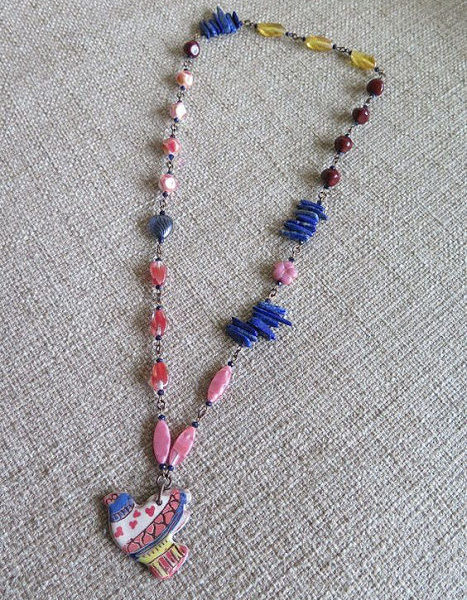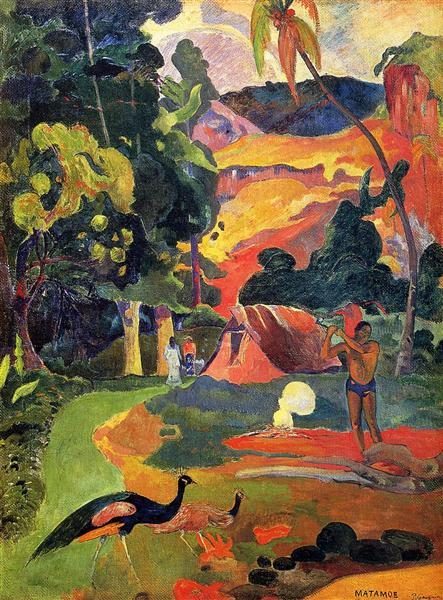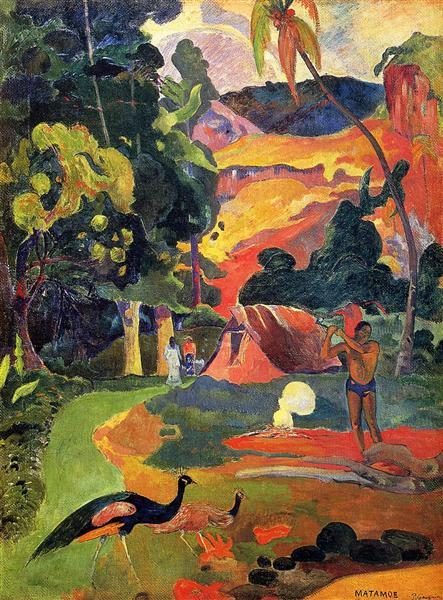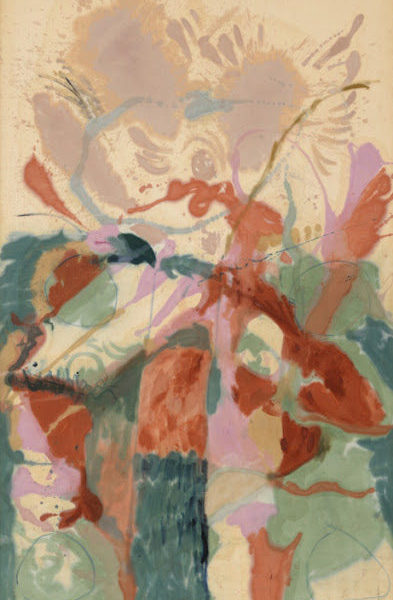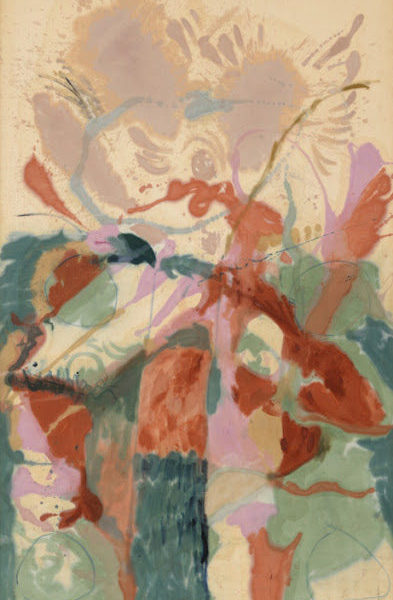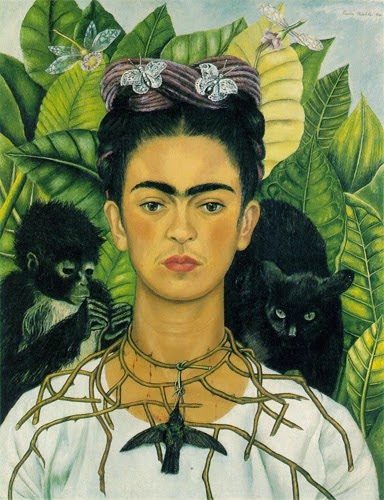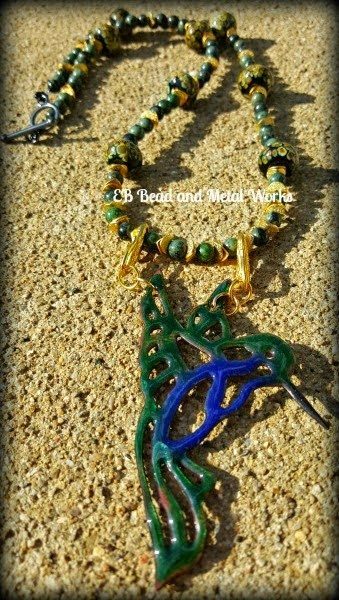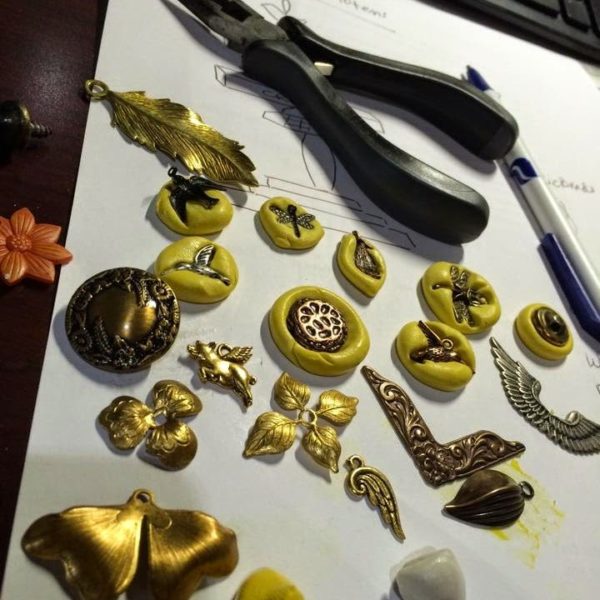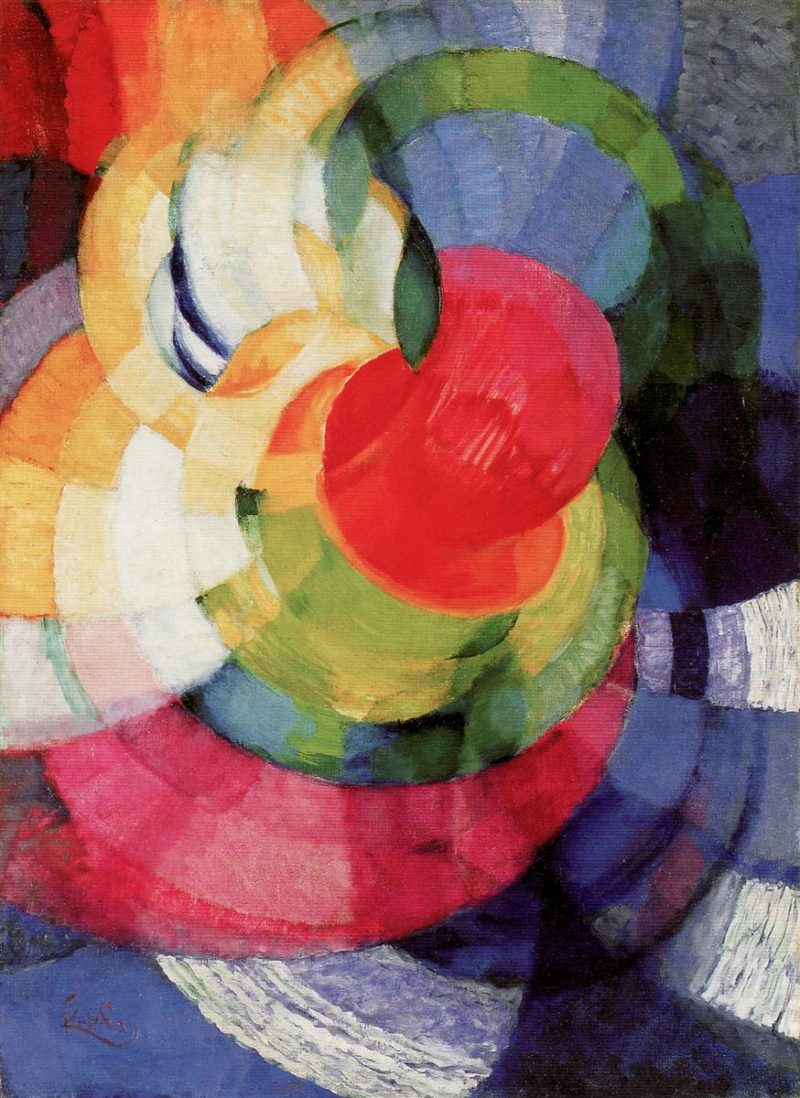
Title: Disks of Newton (Study for “Fugue in Two Colors”)
By: František Kupka
Date: 1912
Medium: Oil on Canvas
What is the Monthly Challenge?
Every month we challenge our readers to create jewelry inspired by the featured artwork. You have until the end of the month to share your work and then we pick two winners to receive beads and jewelry-making supplies from our sponsors. Our only rule? You must use at least one art bead in your piece!
About the Art & Artist:
The title of this work refers to the seventeenth-century English physicist Sir Isaac Newton, who discovered that the light of the sun is composed of the seven colors of the spectrum: red, orange, yellow, green, blue, indigo, and violet. Kupka’s radiant composition incorporates circular bands of vibrating color, including the full range of the spectrum as well as white.
When the Czech painter Kupka exhibited his purely abstract paintings at the 1912 Salon d’Automne in Paris, the French critics were enraged. The blazing colors and cosmic symbolism of works such as Disks of Newton were seen as a blatant challenge to French taste and tradition. The title refers to the seventeenth-century English physicist Sir Isaac Newton, who discovered that the light of the sun is made up of the seven colors of the spectrum: red, orange, yellow, green, blue, indigo, and violet. Newton expressed the mixing of these colors in the form of a disk, or a color wheel, which showed that if two different colors of the spectrum are combined, they produce a third color, and if all seven colors are mixed optically, they produce white.
Kupka’s radiant composition uses Newton’s scientific discoveries by incorporating circular bands of expanding concentric rings of burning, vibrating color, including the full range of the spectrum, along with white. The forms overlap and interpenetrate each other to produce an exciting sense of spinning movement. The artist’s fascination with cosmology and astronomy suggests that the circular blades of color whirling out from the red center may relate to images of the planets and their orbits. Another analogy is demonstrated by the word fugue in the second half of the title, which evokes the polyphonic interweaving in musical arrangements of Johann Sebastian Bach. Kupka believed that painting should be as abstract as music, declaring: “I can find something between sight and hearing and I can produce a fugue in colors as Bach has done in music.”
František Kupka (23 September 1871 – 24 June 1957), was a Czech painter and graphic artist. He was a pioneer and co-founder of the early phases of the abstract art movement and Orphic Cubism (Orphism). Kupka’s abstract works arose from a base of realism but later evolved into pure abstract art.
František Kupka was born in Opočno (eastern Bohemia) in Austria-Hungary in 1871. From 1889 to 1892, he studied at the Academy of Fine Arts in Prague. At this time, he painted historical and patriotic themes. Kupka enrolled at the Academy of Fine Arts in Vienna, where he concentrated on symbolic and allegorical subjects. He was influenced by the painter and social reformer Karl Wilhelm Diefenbach (1851–1913) and his naturistic life-style. Kupka exhibited at the Kunstverein, Vienna, in 1894. His involvement with theosophy and Eastern philosophy dates from this period. By spring 1894, Kupka had settled in Paris; there he attended the Académie Julian briefly and then studied with Jean-Pierre Laurens at the École des Beaux-Arts.
Kupka worked as an illustrator of books and posters and, during his early years in Paris, became known for his satirical drawings for newspapers and magazines. In 1906, he settled in Puteaux, a suburb of Paris, and that same year exhibited for the first time at the Salon d’Automne. Kupka was deeply impressed by the first Futurist Manifesto, published in 1909 in Le Figaro. Kupka’s 1909 painting Piano Keyboard/Lake marked a break in his representational style. His work became increasingly abstract around 1910–11, reflecting his theories of motion, color, and the relationship between music and painting (orphism). In 1911, he attended meetings of the Puteaux Group (Section d’Or). In 1912, he exhibited his Amorpha. Fugue à deux couleurs, at the Salon des Indépendants in the Cubist room, although he did not wish to be identified with any movement.
Kupka had a strong interest in color theory and freeing colors from descriptive associations (which is thought to have possibly influenced other artists like Robert Delaunay). Margit Rowell described his painting The Yellow Scale (c. 1907) as “Kupka’s first attempt to come to terms with color theory in which the result is both personal and successful”. Although a self-portrait, the subject of the painting was the color yellow. Around 1910 he began developing his own color wheels, adapting a format previously explored by Sir Isaac Newton and Hermann von Helmholtz. This work in turn led Kupka to execute a series of paintings he called “Discs of Newton” (1911–12).
In 1931, he was a founding member of Abstraction-Création. In 1936, his work was included in the exhibition Cubism and Abstract Art at the Museum of Modern Art in New York City, and in an important show with another Czech painter, Alphonse Mucha, at the Jeu de Paume in Paris. A retrospective of his work took place at the Galerie Mánes in Prague in 1946. The same year, Kupka participated in the Salon des Réalités Nouvelles, where he continued to exhibit regularly until his death. During the early 1950s, he gained general recognition and had several solo shows in New York.
New Submission Policies!
Create Your Account:
Take a minute to create your account on the site right here. I recommend using your full name or business name as your username.
After you create your account, add your profile photo and bio.
(If you have a long-lost WordPress account you may need to reset your password.)
Entering the Monthly Challenge:
When you are ready to add your monthly entry go the submit page. You’ll need to login before you can submit your photo. You can submit photos from your computer or mobile device.
Remember to add your blog or shop link and art bead details to the description.
You can upload two photos for each monthly challenge category (jewelry or beads).
Add your photo to the gallery for the current month.
___________________________________________________________________
How to Enter the Monthly Jewelry Challenge:
Create something using an art bead that fits within our monthly theme. We post the art to be used as your inspiration to create. This challenge is open to jewelry-makers, fiber artists, collage artist, etc. The art bead can be created by you or someone else. The challenge is to inspire those who use art beads and to see all the different ways art beads can be incorporated into your handiwork.An Art Bead must be used in your piece to qualify for the monthly challenge. Upload your photo to our new photo gallery. Include a short description, who created the art beads and a link to your blog or shop, if you have one. Deadline is April 30th.
You may upload two entries per month.
***Beads strung on a chain, by themselves and beads simply added to wire or cord will not be accepted.***
Entries for Bead Artists
Art beads must be created by you and fit the Art Bead Scene’s monthly challenge theme. They can be made for the challenge or ones you have made before. Two entries per month are allowed.
One entry will be picked by the editors each month for a free month of advertising on the Art Bead Scene. Bead entries have to be uploaded to the photo gallery by the 30th of the month. See above to create an account.
Monthly Challenge Winners
• One prize winner will be selected at random from all pictures posted in our new gallery!
• Winners will be randomly chosen from all the qualifying entries on May 1st.
Perfect Pairings: Designer + Art Bead Artist
• Perfect Pairings focus on both the jewelry designer and the art bead artist.
• Be sure to point out all the art bead artists in your work in the description of the photos when you upload to the new gallery. Links to their website or shop are appreciated. That way we can all find new art beads to love!
• From all the entries during the month, an editor will pick their favorite design to be featured on Friday here on the ABS, so get those entries in soon.
What is an Art Bead?
An art bead is a bead, charm, button or finding made by an independent artist. Art beads are the vision and handiwork of an individual artist. You can read more about art beads
.***A bead that is handmade is not necessarily an art bead. Hill Tribe Silver, Kazuri ceramic beads or lampwork beads made in factories are examples of handmade beads that are not considered art beads.
Beaded beads, stamped metal pendants or wire-wrapped components are not considered art beads for our challenge.***
Join us Tomorrow to see our prize and sponsor for April!


